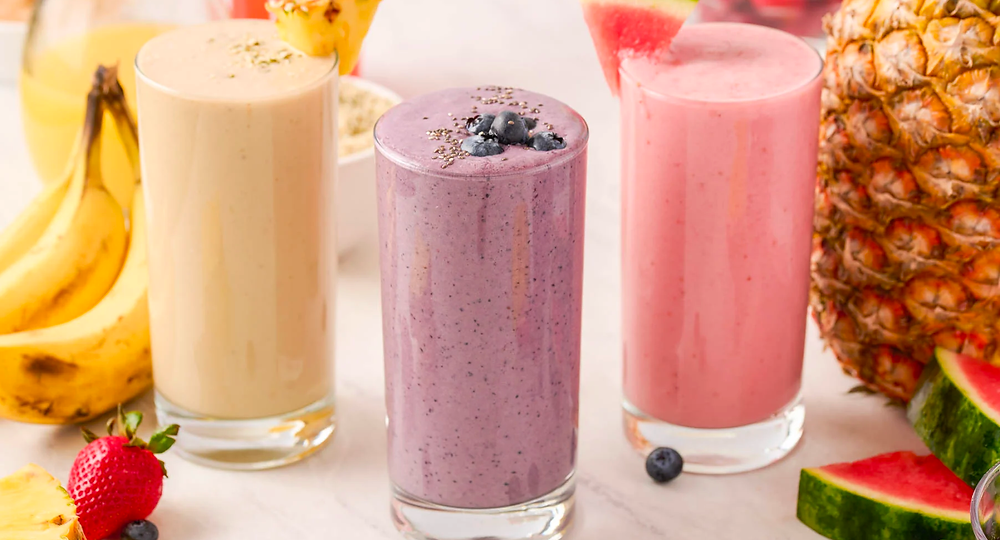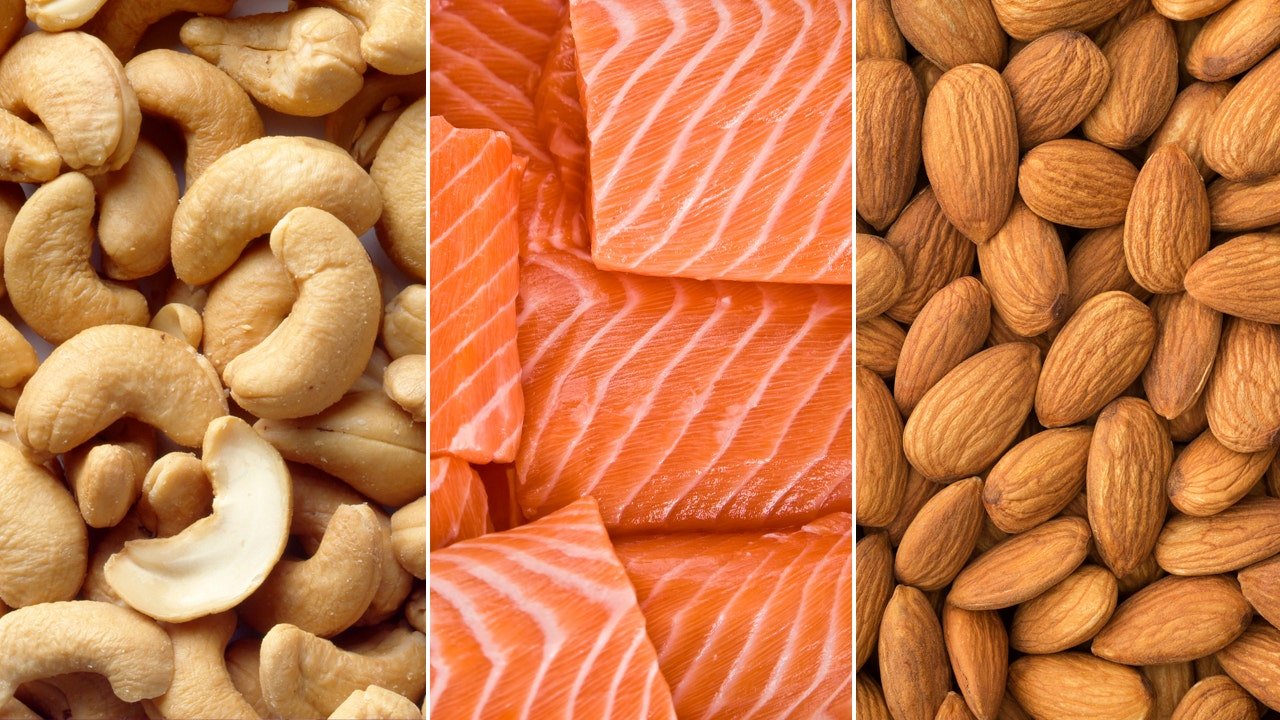Are you curious why high fiber smoothies are good for your health?
There’s nothing better than a cold, refreshing smoothie filled with color and healthy ingredients! Smoothies contain high amounts of fiber, keeping your blood sugar regulated and your stomachs fuller longer.
Smoothies can be a great way to sneak in great nutrients into your diet which may otherwise not be eaten on their own!
In today’s article, we will be breaking down why fiber is beneficial and our favorite high fiber smoothie recipe.
What is Fiber, and how is it Beneficial to Your Health?
Fiber, often found in whole grains, legumes, fruits, and vegetables, is a type of carbohydrate from plant foods that cannot be digested or absorbed.
Fiber, since it is not well-digested by your body, travels through your small intestine and colon relatively intact.
There are two types of fiber: soluble and insoluble.
Soluble Fiber
Soluble fiber, the most common type of fiber, is able to dissolve in water to form a gel-like material. This type of fiber is most effective at improving glycemia and insulin sensitivity as well as lowering blood glucose and cholesterol levels.
Here are some examples of foods rich in soluble fiber:
Whole Grains: oats and bran (oatmeal)
Vegetables: carrots, brussel sprouts, sweet potatoes
Fruits:apples, citrus fruits, strawberries, blueberries, pears
Legumes: bleak beans, kidney beans, lentils, chickpeas
Seeds: chia seeds, flax seeds
Psyllium husk: though not well-known, this can be a dietary additive to a smoothie to provide more soluble fiber
Insoluble Fiber
Insoluble fiber does not dissolve in water but is important for regulating normal bowel movements! Insoluble fiber can help bulk up waste in your body and pull more water into the stool to relieve constipation.
Foods high in insoluble fiber include:
Whole Grains: quinoa, brown rice, and whole wheat items like bread, pasta, and cereal
Vegetables: broccoli, cauliflower, brussel sprouts, carrots, celery, cabbage, corn
Fruits: apple (with skin), pear (with skin), raspberries, blackberries, kiwis, grapes (with skin), prunes
Nuts and seeds: walnuts, almonds, flax seeds, chia seeds, sunflower seeds
Legumes: lentils, chickpeas, kidney beans, black beans
We bet if you’ve heard about fiber, you probably know it is helpful in relieving constipation and digestive health. This is true, but fiber brings a plethora of other health benefits to the table.
What are the health benefits of fiber?
Here are some other health benefits of fiber to be aware of.
Digestive health & constipation relief (IBS individuals may be told to increase fiber for more regular bowel movements)
Increases satiety, thus helps maintain a healthy weight to decrease risk of diabetes, heart disease, and cancer
Helps control blood sugar levels
Manages blood pressure
Could Too Much Fiber Be Harmful to My Health?
Fiber is very beneficial to your health in many ways, like promoting digestive health and decreasing constipation. However, if too much fiber is ingested, the fiber build-up can quickly promote bloating, gas, and cramping.
Listen to your body! Everyone’s gut microbiome is unique to them and thus will react differently to fiber types and amounts.
As a rule of thumb, it is recommended by the USDA for adults up to age 50 to have 25 grams per day as a woman and 38 grams as a man.
For adults over age 50, women are recommended to have 21 grams per day, and men are recommended to have around 30 daily grams.
In general, it is better to get fiber from whole foods as opposed to supplementation. If you have questions on supplementation, talk with your practitioner or reach out to New York City Nutrition and schedule a call to learn more about what might work best for you.
A quick tip that helps people understand how to read a food label for fiber intake is to make sure your whole grain food has 1 gram of fiber for every 10 grams of carbs! If the ratio is smaller, that is even better!
Dietitian-approved High-Fiber Smoothie Recipes
There are so many ways to make a high-fiber smoothie, so by providing you with ingredients you can substitute or add, you can personalize it to be your favorite!
Below is a list of ingredients you can utilize to make your smoothie high-fiber, as well as an example of one as well.
Step one: Pick your base liquid
Plain Greek yogurt (additive for more protein)
Step 2: Add your fruits and change up combinations for variety in your smoothies!
Pear (with skin)
Banana (for sweetness and a thicker texture)
Step 3: Add a handful or two of your favorite leafy green
Step 4: Nuts and seeds are a great addition for extra fiber
Chia seeds (1-2 TBSP per serving is recommended)
Nut spreads/butters (increase the thickness of smoothie)
Step 6: Enhance the sweetness
Matcha powder (to add caffeine and a green tea taste)
Step 7: After you have chosen some of your favorite ingredients, blend until smooth and enjoy!
Higher in Fiber Berry Smoothie Recipe
If choosing your own smoothie ingredients and proportions is not your thing, a classic high-fiber smoothie recipe is included just for you.
What you need:
8 ounces (or 1 cup) of unsweetened almond milk
1 cup blueberries (tip: frozen fruit will increase thickness of smoothie)
1 tbsp chia seeds
2 tbsp honey
Add the almond milk to your blender.
After washing all fruit and vegetables, combine the rest of the ingredients to the blender and combine until smooth.
Transfer the smoothie combination to a glass, and add a few berries on top to make it look and taste good!
Other additional tips on how to get more fiber in your diet:
If smoothies are not a staple in your diet, there are still ways to get adequate fiber in your diet and maintain a healthy gut!
Snack on the high-fiber foods! Instead of adding nuts, seeds, fruits, and vegetables into a smoothie, pack it as a snack. Hummus and carrots are a perfect example of a high-fiber snack!
Look for the word “whole” on the ingredients label! The bread may be “multigrain”, but this does not mean the grain is whole! The grain could be refined and thus low in fiber.
Use a 1:10 ratio for fiber: carbohydrates on a food label. For every 10 grams of carbohydrates, try to get 1 gram of fiber!
Keep the skin on the fruit. The skin is high in fiber!
Add vegetables, dried beans, and peas to soups to boost the nutrient density and fiber count.
While you increase your fiber intake, make sure to increase your water intake!
High-Fiber Smoothie: The Takeaway
This can be a lot of information to grasp, but having the key information outlined below can hopefully allow you to understand more about fiber and its benefits.
Fiber is the plant-derived part of plants that can’t be completely digested. Fiber is very beneficial to your digestive health.
Other fiber benefits include:
Digestive health & constipation relief (IBS individuals may be told to increase fiber for more regular bowel movements)
Increases satiety, thus helps maintain a healthy weight to decrease the risk of obesity, diabetes, heart disease, and cancer
Helps control blood sugar levels
Manages blood pressure
Smoothies can be a great way to sneak in great nutrients, like fiber, into our diet, which may otherwise not be eaten on their own!
By combining a variety of nuts, seeds, fruits, vegetables, and whole grains, fiber will be adequately integrated into your diet!
If you are looking for additional support on understanding your fiber needs, digestive health, and other gut-related health concerns, feel free to schedule an appointment.



